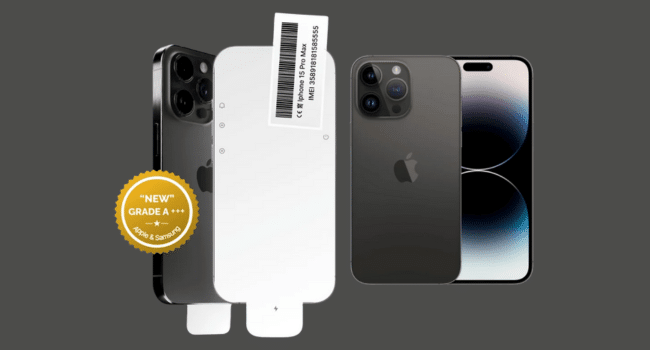Table of Contents
Trade Barriers Are Redefining Consumer Tech Choices
In 2025, shifting trade dynamics are reshaping the global smartphone market. As tariffs and import duties continue to push up the prices of new devices, consumers and retailers across Europe and the United States are turning toward premium renewed smartphones as a smarter and more sustainable alternative.
What was once considered a budget-friendly compromise has now evolved into a mainstream choice — offering the same performance, design quality, and reliability as new models, but at a fraction of the cost.
Tariffs Transforming the Smartphone Market
With recent U.S. tariffs reaching up to 50% on certain electronics, the price of new smartphones has risen sharply — in some regions by more than 30%. Europe is facing similar pressures, as inflation and supply chain challenges continue to limit market growth, which climbed by only a few percentage points in early 2025.
This economic environment is fueling demand for refurbished and renewed devices, which offer stable pricing and consistent quality amid ongoing market uncertainty.
Growing Demand for Renewed Devices
Data from HK Refurbished Stock, a leading global supplier of refurbished iPhone and Samsung smartphones, shows that demand from European markets is rapidly increasing. Projections indicate that the region’s renewed smartphone industry will expand at nearly 10% annually, reaching an estimated $47.2 billion by 2032 — almost double its current value.
In the U.S., renewed devices are helping offset the impact of higher tariffs, allowing retailers and distributors to maintain competitive offerings. Hong Kong’s position as a free port also provides a significant advantage, ensuring stable supply chains and more predictable pricing compared to tariff-affected regions.
Quality Becomes the Deciding Factor
The surge in renewed smartphone adoption is largely driven by advancements in device quality. Modern A+++ grade iPhones and Samsung models undergo comprehensive refurbishment and testing processes that ensure like-new appearance and functionality.
These high-grade devices have gained strong traction among consumers who value both performance and affordability. Retailers in major markets such as the UK, Germany, France, Italy, and the U.S. report faster sales cycles and stronger customer satisfaction with A+++ grade inventory.
The Industry Impact
As tariffs and global trade tensions continue, renewed smartphones are filling a vital gap in the electronics sector. They help balance supply and demand while offering distributors and retailers a profitable and sustainable growth path.
This evolution is redefining perceptions of refurbished technology. No longer seen as a compromise, renewed devices have become a competitive advantage in an industry increasingly focused on cost efficiency and environmental responsibility.
Looking Ahead
With production costs and trade barriers still on the rise, the shift toward renewed smartphones is expected to accelerate further in the coming years. Businesses across the supply chain are recognizing the long-term value of reliable, high-quality renewed devices — especially those sourced from trade-friendly regions like Hong Kong.
For distributors and retailers, this growing segment represents both a strategic opportunity and a resilient response to global market challenges.
